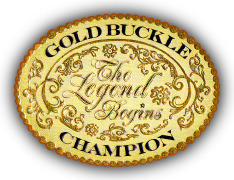When you go to your doctor’s office the nurse will almost always take your vitals, without question. A lot about your health can be told just through vitals like blood pressure and pulse. Your horse is no different.
I believe that any equestrian should learn how to take a horse’s vitals just as they should learn how to properly groom or tack up. Not only is this skill essential in checking your horse’s health in general but also is extremely useful in the event of an emergency (i.e. suspected illness and relaying symptoms to your vet over the phone).
Temperature: One of the most basic vital signs is body temperature. Every horse owner (or pet/livestock owner for that matter) should have an accurate digital thermometer in their first aid kit. Taking your horse’s temperature might be a little awkward for some people but really, it is quite simple.
A healthy adult horse should have a temperature between 99 and 101.
Video tutorial on taking your equine’s temperature:
httpv://www.youtube.com/watch?v=vSRJzRlswsI
The biggest mistake when it comes to taking a horse’s temperature is not leaving it in the animal for long enough, though this applies mostly to traditional mercury thermometers.
Pulse: Your horse’s pulse can tell you a lot about how your horse is feeling. There are a few different locations on your horse's body in which you can take their pulse. Some of these areas might work better on some horses than others. Finding your horse's pulse can be a little tricky at first so practice makes perfect.
A healthy adult horse should have a pulse of 28 to 44 beats-per-minute.
Video tutorial on taking your horse's pulse:
httpv://www.youtube.com/watch?v=tnz12olRX5E
Respiration (BPM): Your horse's respiration rate or breaths-per-minute (BPM) is a good indicator of general health. Low BPM rate can be a sign of depression or illness while a high BPM rate can mean serious stress or exertion as well as illness. Taking your horse's respiration is pretty easy. You can either watch their sides or nostrils for each breath.
A healthy adult horse should have a BPM rate of 10-25.
Video tutorial on taking BPM:
httpv://www.youtube.com/watch?v=UyGD7gq2C80
Mucous Membranes & Capillary Refill: Checking capillary refill and your horse's mucous membranes is often dismissed or forgotten. Capillary refill is a great way to check if your horse is dehydrated, which can be a serious issue in of itself but also a symptom of many different illnesses. Your horse's gums should be a healthy pink color and moist to the touch.
A healthy adult horse should have a capillary refill of 2 seconds or less.
Video tutorial on checking capillary refill:
httpv://www.youtube.com/watch?v=nVBV8Z1eM-g
Another way to check dehydration is pinching or tenting the skin on the horse's neck or chest. A hydrated horse's skin will go flat quickly whereas a dehydrated horse's skin will stay tented for 3 seconds or longer.
Gut Sounds: One prominent symptom of most colic or other digestive ailment is a lack of gut sounds. A healthy horse's stomach works constantly. You probably are already aware during grooming or just being around horse's that their stomach grumble often. An absence of gut sounds or overactive gut sounds are both reasons to consult a vet ASAP.
Video tutorial on gut sounds:
https://www.youtube.com/watch?v=cY1ETnyxskI
w/o stethoscope
httpv://www.youtube.com/watch?v=XvV9MJbXSs4
Horses, like people, are individuals. Healthy vitals for one horse might be a bit different than another. Age, general health, body condition and even your climate all need to be factored in. Practicing taking your horse's vitals will not only make you more efficient but also teach you what is normal for your particular horse.
